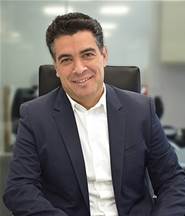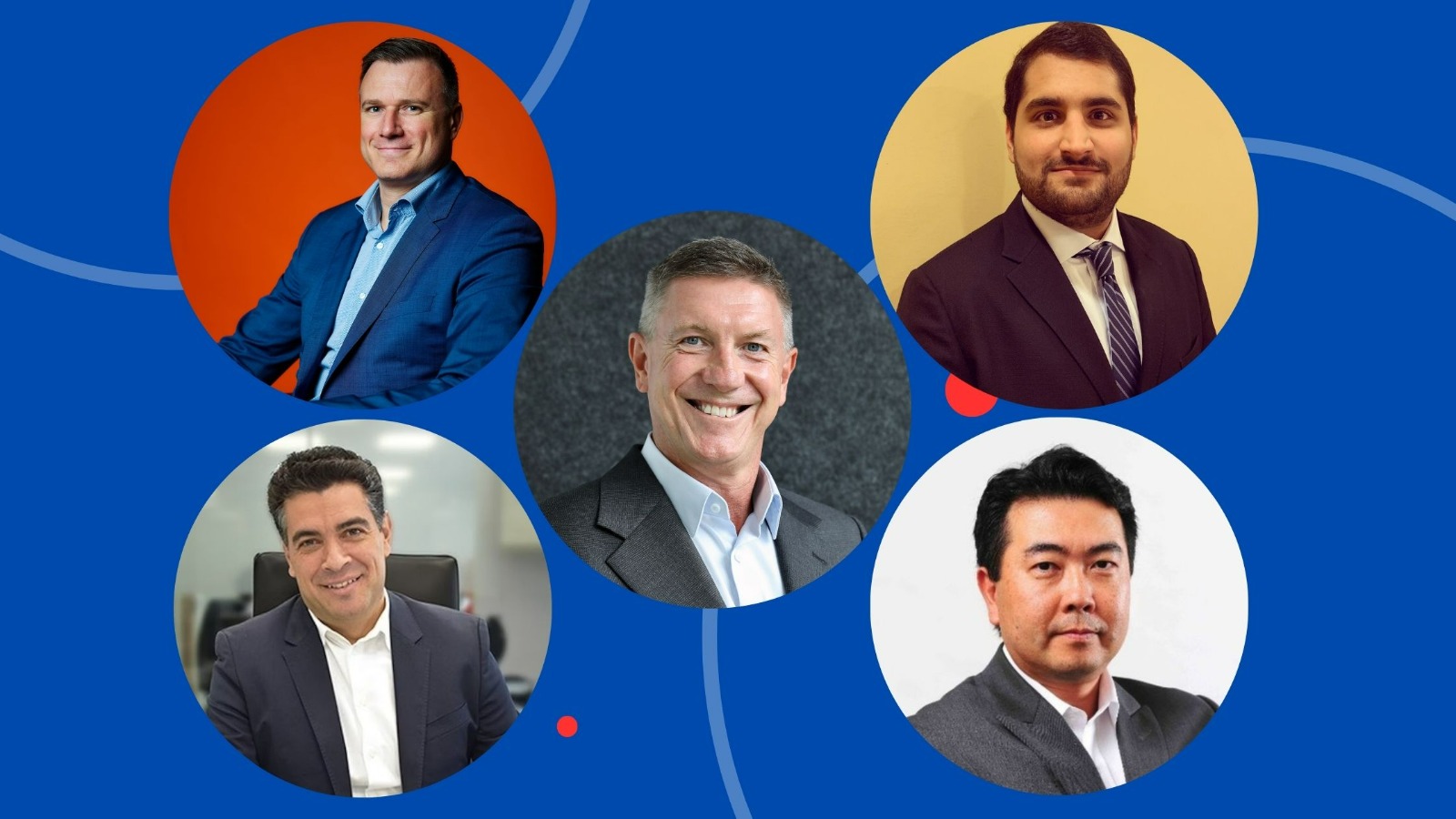As technology continues to drive unprecedented efficiency and productivity across industries, the environmental impact of the ICT sector is becoming increasingly evident.
Globally, computing contributes approximately 2 to 3 percent of greenhouse gas emissions, a figure projected to rise to 4 percent with the growing adoption of big data, AI, and hybrid work models if current practices persist, according to the UN.
In the Asia-Pacific (APAC) region, the challenge is particularly pronounced. Data centres, which are integral to cloud computing and storage, are major contributors to this issue due to their significant energy consumption and cooling requirements.
While renewable energy sources are vital to reducing the carbon footprint, their availability varies across the APAC region, with some countries facing limitations in supply and infrastructure.
To get more insights in our focus on sustainability and innovation, iTNews Asia speaks to industry ecosystem practitioners to find how the tech industry is innovating sustainably and minimising their carbon emissions. Our respondents include:
David Costa, Chief Sustainability Business Officer, NTT DATA
Jon Curry, Vice President of Operations, Asia Pacific, Digital Realty (DLR)
Paulo Ossamu, Cloud First Business Lead, Growth Markets, Accenture
Matthew Oostveen, Vice-President and Chief Technology Officer, Asia Pacific & Japan, Pure Storage and
Kabir Buxani, Chief Technology Officer, Sonak Group of Companies.
iTNews Asia: What challenges do you see in integrating sustainability and innovation in the tech industry?
Curry (DLR):

There is a common misconception that sustainability and innovation are at odds. Rather than a challenge, creating synergies between sustainability and innovation can drive progress and create new opportunities.
-Jon Curry, Vice President of Operations, Asia Pacific, Digital Realty (DLR)
For instance, sustainable data centre solutions, such as advanced cooling technologies and energy-efficient designs not only reduce environmental impact but also enhance operational efficiency. That, in turn, powers higher performance, reduced costs, and increased scalability.
Costa (NTT): Technological complexities and market demand can make integrating cutting-edge technologies like AI and IoT challenging due to their unpredictable impacts.
Additionally, supply chain complexities and the need for cultural change within organisations further complicate the integration of sustainability.
Ossamu (Accenture): Many companies lack awareness of their technology’s environmental impact and must adapt to increasing regulatory pressures for sustainable tech, like Green IT and Cloud. They need to align their offerings to disrupt consumption patterns, prove their authenticity, and demonstrate real environmental commitment.
Accurately measuring IT’s environmental footprint is challenging due to the early stage of sustainable technology, lack of standards, and unreliable data.
-Paulo Ossamu, Cloud First Business Lead, Growth Markets, Accenture
The Green Software Foundation, which Accenture helped establish, addresses this by creating standards to reduce carbon emissions in energy-intensive technologies.
Companies also face a shortage of skilled talent and a perception that sustainability comes with a “green premium.” The tech industry needs to shift its view on value, recognising the significant benefits of prioritising sustainability.
Oostveen (Pure): Technology’s effectiveness depends on the people and processes behind it. To integrate sustainable tech successfully, education and awareness are key. As the market understands the importance of sustainability, it will become more open to adopting it.
Cost is a factor since sustainable technology often costs more, so finding a balance between performance and environmental impact is crucial.
Data centres already consume 1 to 2 percent of global energy, and this is expected to grow with AI, affecting electricity use, water supply, and physical space.

Research from the University of California estimates that 10 queries on OpenAI’s ChatGPT requires around a litre of water. As we adopt new technologies, we must consider their environmental impact.
-Matthew Oostveen, Vice-President and Chief Technology Officer, Asia Pacific & Japan, Pure Storage
Buxani (Sonak): As data requirements get larger and larger, data storage and computing resources are more relied on, and carbon emissions from these servers will likely grow. We would need to rely on our cloud partners to improve their technology to go green to combat this.
iTNews Asia: How are you integrating sustainability into your innovation processes, product development or IT infrastructure, ensuring that they are complementary rather than competing priorities?
Oostveen (Pure): We believe a robust ESG strategy is foundational to creating long term-value for business and stakeholders. Sustainability is built into every step of our product cycle from sustainable manufacturing and supply chain management to product lifecycle manufacturing.
Buxani (Sonak): In our organisation, IT focuses on boosting process efficiency through data, automation, and AI. This often leads to more sustainable outcomes.
For instance, we have improved our delivery routing so that online orders come from nearby stores instead of our main warehouse, cutting delivery costs and emissions.
We drastically reduced our paper usage compared to five years ago, thanks to new software and automation that have replaced old forms and documents with more efficient digital solutions.
Curry (DLR): Sustainability and innovation as key drivers of long-term value for both organisation and stakeholders. From design and construction to operations, sustainable practices support our customers’ business and environmental goals.
Our modular design approach improves efficiency with scalable and flexible data centre solutions that cut down on resource use. By incorporating AI, we optimise energy consumption, monitor usage in real time, and perform predictive maintenance to minimise waste. Our advanced cooling technologies support high-density AI and data-intensive workloads while reducing energy consumption.
Costa (NTT): We integrate sustainability into innovation processes, product development, and IT infrastructure by embedding environmental, social, and governance (ESG) principles in all operations. This integration ensures that sustainability and innovation are not competing priorities, but complementary drivers of value.
We promote sustainable innovation by including environmental criteria in our research and development. For instance, our smart city projects use IoT and AI to cut carbon emissions and enhance urban living.
We focus on creating solutions that are efficient, durable, and recyclable and work with clients to develop customised solutions that meet their sustainability goals, such as reducing waste and emissions in their supply chains.
Our IT infrastructure features energy-efficient data centres, renewable energy, and advanced technologies like AI and cloud computing to minimise environmental impact.
iTNews Asia: How does the need for sustainability affect your current business model? How do you make sure your sustainability strategies align with your organisation’s goals and future success?
Costa (NTT): It’s promising to see leaders and governments focusing on environmental protection, especially since 50 percent of the world’s GDP relies on nature.

We face major challenges like climate change, biodiversity loss, and social inequality. We view preserving and managing nature as both a moral duty and economic necessity.
-David Costa, Chief Sustainability Business Officer, NTT DATA
By 2030, we aim to achieve net zero emissions and run our data centres entirely on renewable energy. Our “Green Innovation toward 2040” vision focuses on reducing our environmental impact and achieving carbon neutrality by 2040.
This includes promoting renewable energy, developing low-power technologies like our Innovative and Optical Wireless Network (IOWN), implementing internal carbon pricing, and using green bonds.
Curry (DLR): We’re committed to pioneering sustainable practices that benefit our customers and the planet.
We align our sustainability strategies with our business goals through efforts like our supplier ESG program, which upholds high environmental and social standards across our value chain and supports regional government and public sector initiatives.
Oostveen (Pure): Our commitment to sustainable data storage has enhanced our business model. Our architecture sets new sustainability standards and helps customers achieve their goals while meeting evolving tech needs.
Our storage design ensures customers’ infrastructure remains current with seamless software and hardware upgrades, reducing the need for product replacements and e-waste. Our unified data storage offers high density and efficiency, cutting storage-related energy, space, and administrative needs by up to 85 percent.
We also provide a unique Storage-as-a-Service called Evergreen//One, which adapts to customers’ needs, promotes hardware reuse, and extends service life. This service makes energy use more predictable and help our customers reach their emissions goals.
Buxani (Sonak):

Our aim is to minimise waste by improving efficiency, which often boosts our sustainability as well. For instance, we use technology to better predict and manage our inventory, reducing excess and unsold products.
-Kabir Buxani, Chief Technology Officer, Sonak Group of Companies
Ossamu (Accenture): As sustainability regulations tighten, organisations need to examine their entire value chain more closely. We believe that embedding sustainability into business strategy and operations is essential, and do this by:
Ensuring companies integrate sustainable technology through training programs. The Green Software Foundation helps employees learn and drive the Green Software revolution.
Defining a clear vision for sustainable technology to guide IT decarbonisation efforts. For example, Accenture helped an automotive company develop a roadmap for reducing IT carbon emissions by 55 to 65 per cent.
Moving beyond a zero-sum mindset by creating value for a wide range of stakeholders and addressing social and environmental challenges.
Shifting resources to make a significant impact. For instance, we helped Petronas develop a platform to optimise offshore vessel logistics, improving efficiency and reducing costs. Measuring the impact by tracking both financial and non-financial impacts across the value chain, using new metrics and benchmarks.
iTNews Asia: Given the limited availability of renewable energy in some APAC countries, what innovative solutions can IT infrastructures adopt to mitigate their environmental impact?
Costa (NTT): IT infrastructure can improve energy efficiency using advanced technologies like AI and machine learning to manage operations, reduce energy use, and optimise cooling.
They can also use hybrid energy systems that mix renewable sources with conventional energy and incorporate energy storage solutions, such as batteries, to balance supply and demand. Microgrids with local renewable sources, like solar or wind, can further cut reliance on the main grid and lower carbon footprints.
Additionally, adopting energy-efficient hardware and recycling or repurposing IT equipment helps minimise environmental impact from manufacturing and disposal.
Curry (DLR): Data centres can reduce their environmental impact by using advanced cooling technologies to manage heat in high-density environments. Increasing temperature limits in data halls, following Tropical Data Center standards, reduces the need for energy-intensive cooling systems. AI can further optimise operations to cut unnecessary energy use.
In APAC’s warm climate, these technologies are essential for maintaining optimal temperatures efficiently while lowering energy consumption.
iTNews Asia: What role does regulatory framework and industry standards play in driving sustainability efforts within the tech industry, particularly for IT infrastructure?
Oostveen (Pure): Regulations and industry standards are crucial for ensuring safe, reliable, and compatible digital systems. They create a platform for collaboration among government agencies, institutions, professional bodies, and regulators.
For IT infrastructure, these standards help prevent damage and losses from outages and support business continuity and resilience. They apply across different industries, providing guidelines to improve energy efficiency and sustainability.
For instance, green data centre standards help organisations enhance their energy use and sustainability through established frameworks and methodologies. They address the management of electrical, mechanical, and IT components.
Costa (NTT): Regulatory framework and industry standards are vital for driving sustainability in the tech industry, especially for IT infrastructure. They set guidelines for energy efficiency, carbon reduction, and resource management, compelling companies to adopt sustainable practices and align with global and the nation’s environmental goals.
These standards also promote consistency and transparency, enabling effective measurement and reporting of sustainability performance. By adhering to them, IT infrastructure providers can enhance their reputation, attract eco-conscious clients, and contribute to a more sustainable industry.
Curry (DLR): We work with regulators and industry groups to meet and influence these standards. For example, we tested the IMDA’s new Tropical Data Centre standard in Singapore, raising the operating temperature by two degrees celsius.
This change reduced energy use by 2-3 percent and helps data centre operators discuss higher temperature settings with customers, promoting new efficiency standards that benefit both the economy and sustainability.
iTNews Asia: What emerging technologies do you believe will have the most significant impact on creating a sustainable IT infrastructure, and how can organisations prepare to integrate these technologies into daily operations?
Ossamu (Accenture): Digital technology has greatly advanced history but consumes a lot of energy, especially with new technologies like AI, blockchain, and quantum computing.
Generative AI can help businesses plan for a sustainable future. The Green Software Foundation’s Green AI Committee, which includes Accenture, has developed the Green AI Framework to guide sustainable AI practices.
To integrate sustainable technology, organisations should focus on:
- Adopting energy-efficient software development practices, use green UI/UX, and reduce emissions through techniques like “transfer learning” to lower energy consumption.
- Ensuring technologies are fair, transparent, and accessible while addressing privacy and inequality. Invest in developing AI skills and training employees to work with AI effectively.
- Implementing clear governance structures and responsible AI principles to ensure sustainability is prioritised and effectively managed across the organisation.
iTNews Asia: With storage solutions consuming a significant portion of an IT infrastructure’s energy, how can the transition to flash storage impact overall energy consumption?
Oostveen (Pure): IT infrastructures can adopt several innovative solutions to mitigate their environmental impact.
This includes switching to direct flash storage, which can help lower overall data centre energy use by about 20 percent. They can also look at using semiconductor-based flash storage instead of mechanical HDDs, which can achieve up to 17 times greater storage efficiency, reduce physical space needs by up to 94 percent, and create over three times less e-waste.
Switching to all-flash systems can help cut overall energy use by approximately 20 percent.

